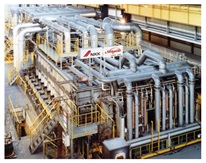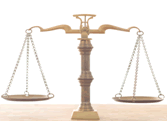Prior User Rights Defense To Infringement Walking Beam Case
Prior Use
Japanese Patent Act stipulates “prior use” that allows a prior user (having prior user rights) to continue using an invention of another party granted a patent if it is proved that the user had manufactured and sold products identical to the patented invention before a patent application was filed with respect to such an invention.

Obviously, if it is proved in a publication or the like to be a fact that the patented invention had publicly been manufactured and sold prior to a date when the patent application was filed, a defense to infringement upon the patent could be asserted by way of invalidity appeals. The defense based upon the invalidity could not be asserted, however, if the patented invention had “non-publicly” been worked in such a manner as to be worked in a factory. A prior use rule was made for the purpose of granting such a user a “statutory non-exclusive license” for the manufacture and sale in spite of the fact that the patent is valid and survives.
On the assumption that the user would have obtained a patent right for an earlier invention by filing a patent application, but failed to do so due to busyness and lack of knowledge of patentability, it is not fair that such an earlier user is precluded by a later patentee’s right for a later invention from any manufacture or sale. The prior use rule was established for such purposes.

However, the Japanese patent practices have been followed not under the principle of a “first-to-invent system” but under the principle of a “first-to-file system” in which an earlier application is entitled to a patent. If prior use is broadly allowed against such a background, a person failing to file a patent application is also allowed to work an invention in secret and assert “I have a prior user right!” against the future enforcement of a patentee’s right. This is not fair for the patentee having filed a patent application with knowledge of disadvantages caused by earlier publication of an invention. Strict criteria for prior use should therefore be established while such a rule itself is allowed.
Person Who Has Been Working Invention
One of strict criteria has been applied so that such a person is limited to the “person who has been conducting business by practicing an invention” or “person who has been preparing for such business” at a time of another party’s filing of a patent application.
If an invention of shoes each having a special sole is granted a patent, for example, a person (a prior user) who purchased a machine for manufacturing such shoes from some machine maker and has actually been manufacturing the shoes is qualified as to be “a person who has been conducting business by practicing the invention.” Under such circumstances, prior user rights would be allowed straightforwardly.
In the present case, however, at the application time, the heating furnace had not actually been manufactured, and for this reason, there was a dispute about to what extent the “preparation for business” could be determined.

Background Of Case
In 1966, a heating-furnace manufacturer (prior user or alleged infringer) presented cost estimates and design drawings for a special walking-beam type heating furnace in response to the inquiry of their customer. They did not actually receive an official order from the customer, but thereafter had opportunities to submit design drawings to a plurality of other companies. Up until then, the heating furnace was embodied only as design drawings under the circumstances where it would have been manufactured upon receipt of an official order. As late as 1970, they received the official order and successfully supplied the heating furnace to the customer.
In 1968 that is just within the time window from the original design (1966) to the product supply (1970) as mentioned above, however, a different company (patentee) filed a patent application for a walking-beam type heating furnace substantially the same in structure as that of the alleged infringer, and this invention was granted a patent in 1980. Without taking any actions, the alleged infringer would have been a real infringer upon the patent.
The alleged infringer filed a lawsuit against the patentee for a declaratory judgement that they have prior user rights considering that it would be quite unfair if their manufacture is subject to injunctions based upon a right of the later patentee in spite of the fact that they had made the design drawings as the earlier user. The alleged infringer was found by both the District Court and the High Court not to be an infringer but to be a prior user having made the design drawings. As a result, the patentee filed a petition of final appeal with the Supreme Court against the former judgments.
Opinion Of Supreme Court
The supreme Court initially confirmed that the invention of the heating furnace of the alleged infringer had been completed at the stages of design drawings, and subsequently found the followings:
Firstly, the “preparation for the working of the invention” was construed by the Court as being the state where:
- he invention had not yet been practiced at the stages of business; however,
- there had been the “intent to practice the invention immediately”; as well as
- such an intent to practice the invention immediately had been “indicated in such a manner and to such an extent that it could be objectively recognized.”
Secondary, the above definition was applied to the present case in the following manner:
- The alleged infringer had requested their subcontracts cost-estimates for parts or the like in case of receipt of an official order to manufacture the heating furnace (obviously, the costs of parts should be known in advance for pricing the heating furnace to be suppled in the future).
- It normally takes a long time from an order to a product supply for this heating furnace because it is not mass-produced but produced upon receipt of an order, and therefore, the parts thereof are not stocked in advance.
- In spite of the fact that the parts had not been purchased but merely cost-estimates thereof had been requested before receipt of an order, it can be considered that the alleged infringer had an “intent to practice immediately.”
- Based upon their conduct of presenting design drawings in response to inquiry, it can be admitted that the intent to practice immediately had been indicated in such a manner and to such an extent that it could be objectively recognized.
- The judgements of the lower courts are justifiable.

For Future Reference
In the present case, an original specification had been submitted in 1966, and a right of the patentee had been established in 1980, and thereafter, the patent dispute arose. About 15 years elapsed after an original request had been made of the subcontracts for cost-estimates of parts or the like. The project had potentially been taken over by other persons; nevertheless, the alleged infringer could successfully submit the cost-estimates from parts manufacturers as evidences by having retrieved them out of an enormously large number of documents, which resulted in the final decision in favor of the alleged infringer as a prior user. For purposes of future reference, it is to be noted that the organization and storage may be quite essential for the future patent dispute.
If you have any questions concerning the above, please feel free to contact us by sending email to inter@ypat.gr.jp.
